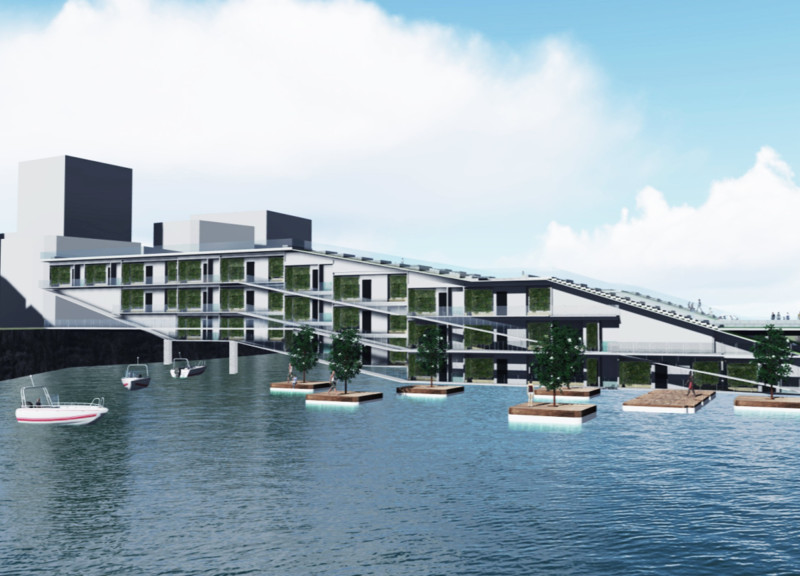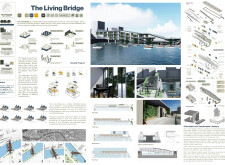5 key facts about this project
The Living Bridge project is an affordable housing solution set within an existing bridge in Melbourne. It reuses urban infrastructure to create a living environment that connects with the surrounding river. The design aims to address urban challenges like high density and limited space while promoting sustainable practices in everyday life.
Design Concept
The concept behind the Living Bridge is known as 'Living The Bridge.' It rethinks traditional housing by placing homes within a bridge structure. This integration allows residents to experience life connected to nature and water. The layout consists of one-bedroom and two-bedroom units that can accommodate various family sizes. This design encourages social interaction among residents while providing private living spaces.
Sustainability Features
A major focus of the Living Bridge is sustainability. Water management strategies are built into the design. For instance, rainwater harvesting systems give residents access to essential water without depending on city supplies. Additionally, hydroponic systems let people grow their own food using the collected rainwater. This not only enhances food security but also promotes self-sufficiency.
Public Amenities
More than just housing, the Living Bridge includes several public amenities that encourage community involvement. Fishing docks and roof spaces aim to create a lively atmosphere for socialization and physical activity. These spaces are accessible to residents and the wider community. This openness fosters connections and builds a sense of belonging.
Accessibility Considerations
Accessibility is an important aspect of the design. Circulation areas are thoughtfully crafted to accommodate residents with different mobility needs. This ensures that everyone can navigate the space easily, contributing to a welcoming living environment.
The design incorporates elements like green roofs and hydroponic gardens. These features add visual interest and support biodiversity. They contribute to a healthier environment for both residents and the surrounding area.



















































